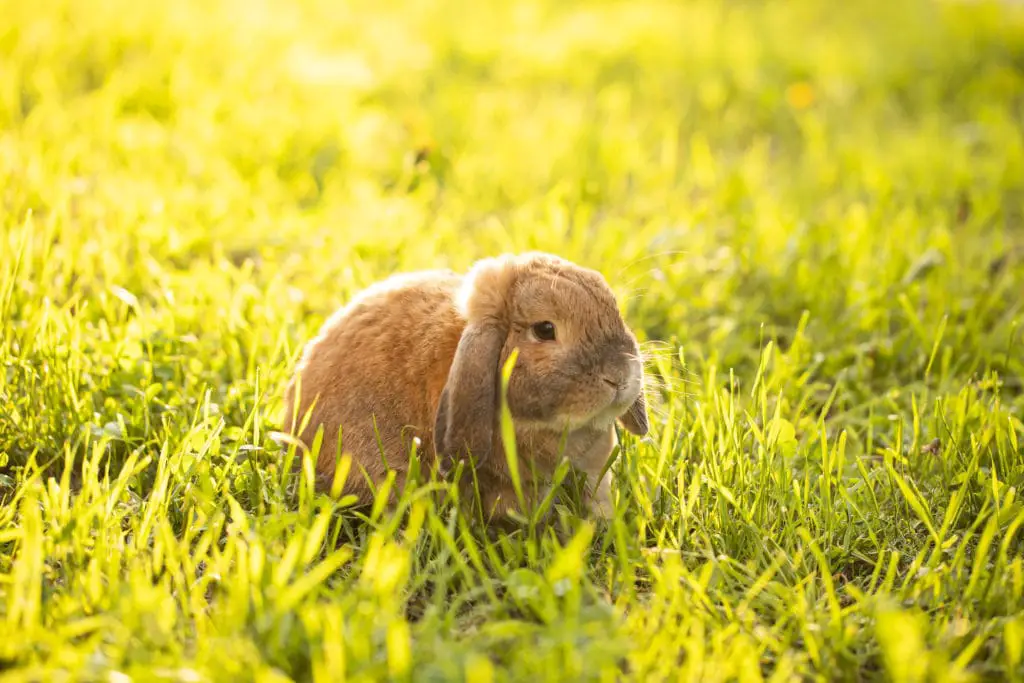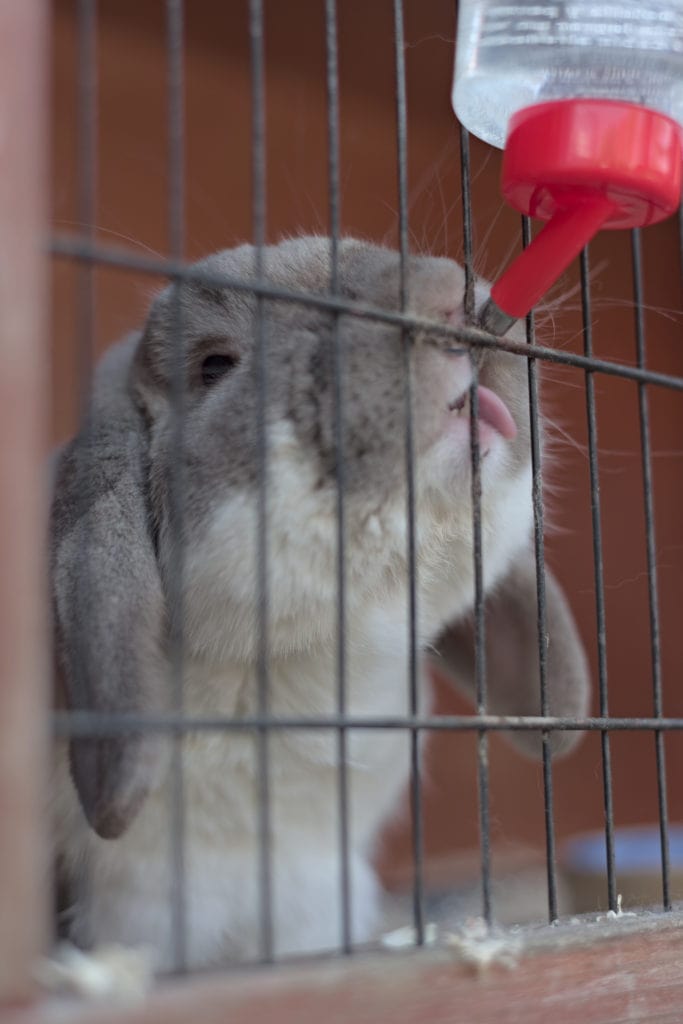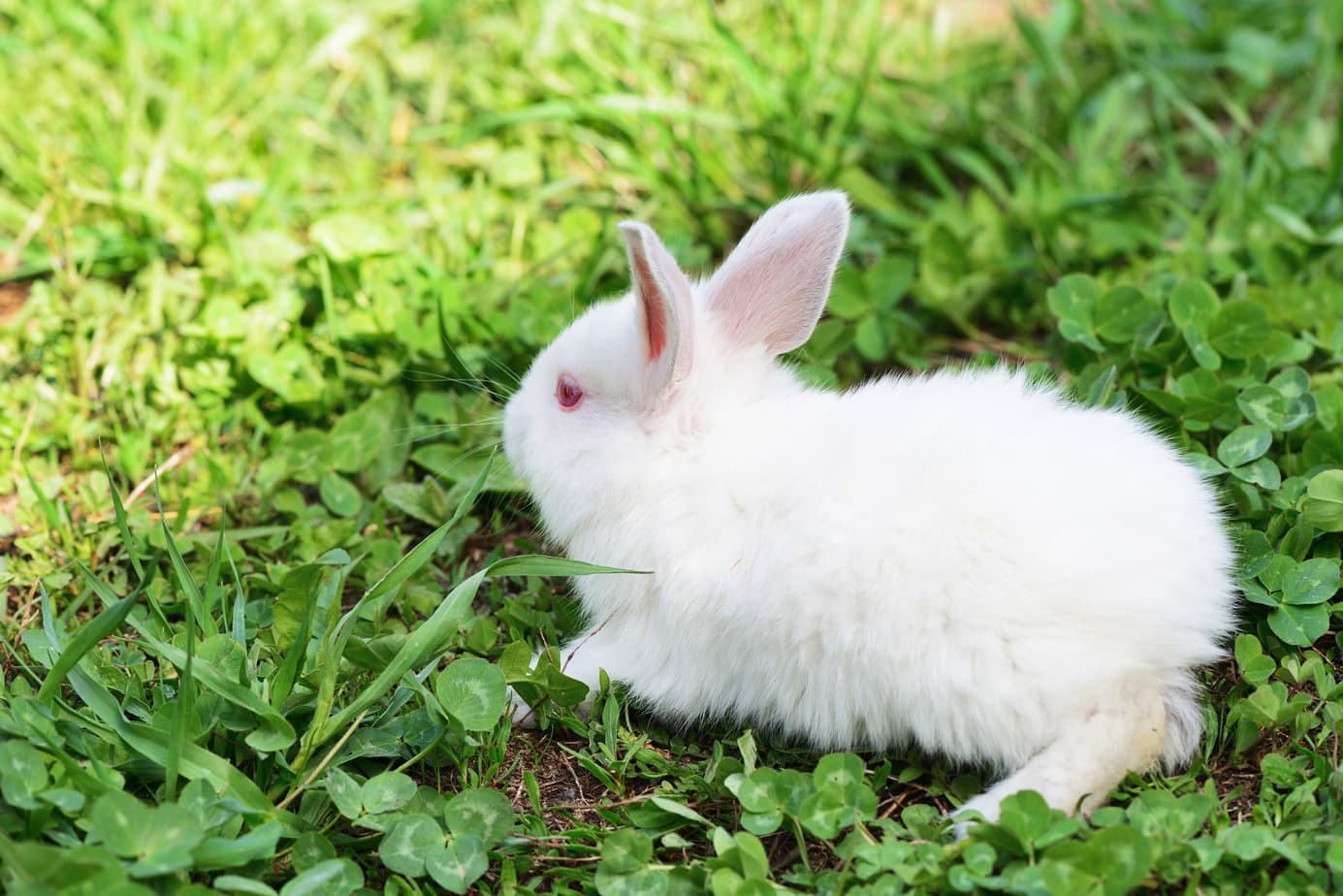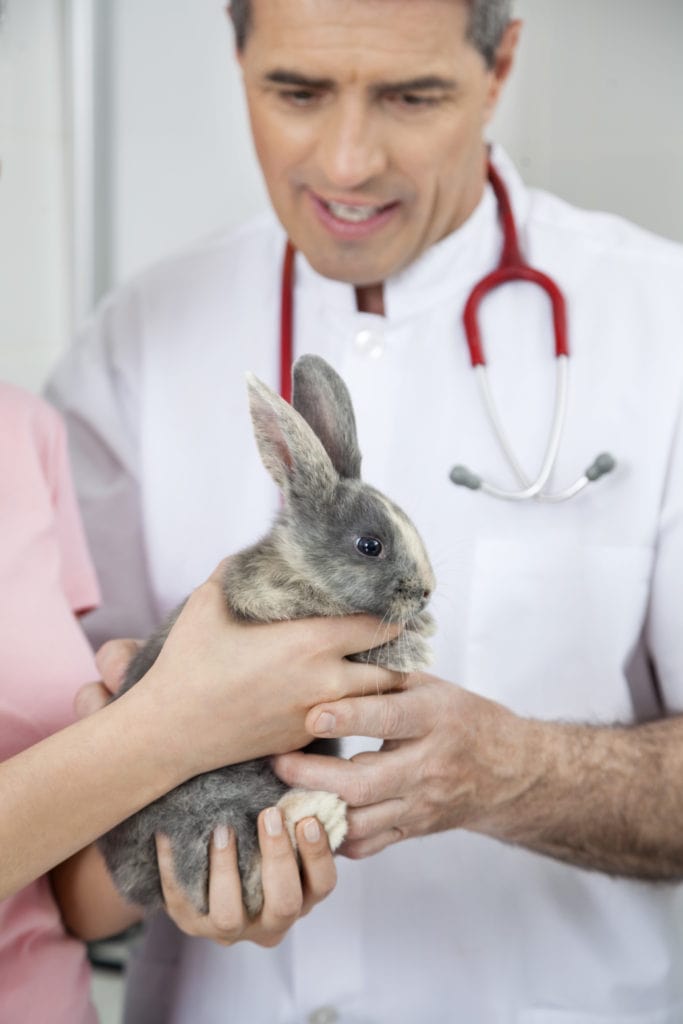
If you’re a new rabbit owner, keeping your rabbit cool in the summer is very important. Rabbits are not comfortable in hot weather and may need some help to stay cool.
10 Ways to Keep Your Rabbit Cool
- Provide lots of water.
- Circulate the air.
- Place a damp towel on the outside of the cage.
- Use marble tile inside the cage.
- Mist the cage with a spray bottle.
- Provide lots of shade.
- Put a frozen water bottle inside the cage.
- Brush out any excess fur.
- Provide washed leafy greens.
- Avoid handling your rabbit.
Before we explore each vital tip for keeping your rabbit cool, let’s first learn when we need to use these tips.
When Is It Too Hot for Rabbits?
Rabbits are most comfortable in temperatures between 40-65 degrees Fahrenheit. So Can a Rabbit Stay in an Air-Conditioned Room? Yes! However, that does not mean you need to take too many extra steps to keep them that cool. When they have a thinner coat during the summer, rabbits can be comfortable in temperatures as high as 75 degrees with extra help from you to stay cool.
Once temperatures reach 80 degrees, you may want to worry a bit more about not overheating your rabbit. Unfortunately, rabbits overheat very easily. Remember this and take action to keep your little friend cool.
Situations may differ for different rabbit types and environments. If your rabbit has longer fur or you are located in a humid area, you will need to be more careful with your rabbit’s temperature. Watch for heatstroke in your rabbit in areas where it is naturally more hot or humid. Below the ten tips, we list the signs of heatstroke in rabbits to look out for and how to treat heatstroke.
1. Lots and Lots of Water

This one is very important! If your rabbit is not getting enough water, they will overheat quickly. Make sure that your rabbit is staying hydrated and drinking lots of water.
If your rabbit typically drinks water from just a bowl or water bottle, consider adding an additional bowl of water or water bottle so that your rabbit has more options to get water. You may place a few ice cubes in their water to encourage them to drink colder water, but do not give them frozen water to drink.
WHAT IF MY RABBIT ISN’T DRINKING?
Rabbit dehydration is a serious issue that, if left unchecked, can be fatal. How to Get Rabbits to Drink Water: 10 Effective Tips is an article I wrote after struggling to get my rabbit to drink enough water. This article will give you signs for dehydration, reasons why your rabbit may not be drinking, and, of course, tips to get your rabbit to drink more water.
2. Circulate Air
If your domestic rabbit is inside, good airflow is key to keeping your little friend cool. Make sure that your air conditioning is around at least 75 degrees Fahrenheit and that it is on all day. Some people turn their air conditioning off when they leave the house. However, doing so could harm your rabbit.
Another option would be to have a rotating fan near your rabbit’s cage. DO NOT position the fan directly on your rabbit. A moving fan will allow your rabbit to move away from the airflow if they become too cold.
On especially hot days or if you do not have a good air conditioner, place a bowl of ice in front of the fan to ensure cold air is being directed your rabbit’s way.
Does your rabbit live in the garage? If the temperature is not closely monitored, the garage can become too hot for your rabbit, which is detrimental to their health. A garage is not an ideal environment for a rabbit, but check out my article Can a Rabbit Live in a Garage here to see tips that will help you choose the best space.
3. Damp Towel
Another way to make sure your rabbit is cool is by putting a damp towel on the outside of their cage. This will help the airflow in the room or on the porch outside to be cooler with water in the air. The towel does not need to be sopping wet, only damp.
Once the towel is warm, remove and replace it. Otherwise, the warm towel could make the area around your rabbit humid, making it hotter. Humidity should be avoided if it’s causing the area around your rabbit to become too warm.
4. Marble or Ceramic Tile
Placing a marble or ceramic tile in your rabbit’s cage is a great option! This option does not require much maintenance from you as your rabbit can lay on the tile when they’re hot and move when they’re not.
However, you must be cautious to keep the tile out of the sun. If the tile is placed in a spot that receives a lot of sunlight, it will heat up and become incredibly dangerous for your rabbit. Place the tile in a shaded area.
You can find marble or ceramic tiles at your local home improvement store. There is not a special animal-friendly tile that you will need to purchase. Any marble or ceramic tile will do.
5. Misting
Rabbits cannot swim well, so misting is a safe option for cooling your rabbit. DO NOT drench your rabbit. Extreme changes in temperature can be traumatic for your rabbit.
Simply spray some water onto your rabbit’s back periodically throughout the day. Their ears especially! A rabbit’s heat comes off most specifically from their ears. If you occasionally mist their ears with water, it will greatly decrease their chances of overheating.
6. Shade
Please, please, PLEASE keep your rabbit in the shade! Too much sun can cause heatstroke! Inside rabbits do not need to worry as much because they have air conditioning. Outside rabbits, on the other hand, do not have that luxury. Place your rabbit’s cage in a shaded area to ensure that your rabbit remains cool. If you’re uncertain of what necessities will keep your outdoor rabbit safe and content, please read my article How to Keep a Rabbit Outside: A Complete Guide for some tips.
DO NOT bring an outside rabbit inside if there is hot weather. Rabbits are very sensitive and a dramatic change in temperature like that will be stressful and possibly harmful to your rabbit. Please consider some of the other methods suggested to cool down an outside rabbit.

7. Frozen Water Bottle
When I mention frozen water bottles, I don’t mean for your rabbit to drink it! Place a water bottle or 2-liter bottle of water in your freezer. Once frozen, place the bottle inside your rabbit’s cage. Your rabbit can then lay against the cold bottle to keep cool, but also choose to lay somewhere else if they become too cold.
It may be handy to have other water bottles freezing in the freezer while one bottle is in your rabbit’s cage. That way you can easily switch out the melted bottle for a fresh, frozen one.
8. Brush Excess Fur
During hot weather, make sure to brush the excess fur from your rabbit. They do not need extra fur trapping in heat. Though shedding will occur year-round, they should not shed too much during the summer months. They will typically shed their winter coat for a thinner summer coat in preparation for summer.
Because your rabbit may not be shedding too much, this tip may not seem very helpful. However, every little bit helps in keeping your rabbit cool. Additionally, removing excess fur will prevent digestion problems with hairballs.
Use a rabbit-specific brush to gently comb your rabbit’s fur. Rabbits have delicate skin, so please do not brush too hard.
9. Wash Leafy Greens
You want your rabbit to get as much water as possible. One thing that may help is washing or spraying their leafy greens with water. The wet greens will entice them to eat the leaves and the water. As they eat the romaine or kale, wet with condensation, they will be getting more water. This is great because hydration is the top priority!
10. Don’t Handle Your Rabbit
Though it may be difficult not to touch your furry friend, they will be grateful you don’t. Holding, petting, and handling your rabbit will just create more movement and stress in an already hot rabbit.
Avoid handling your rabbit during the hot times of the day. Consider playing with them early in the morning or at night when it is naturally cooler.
Signs of Overheating
When hot weather approaches, please keep a careful watch on your rabbit for signs of overheating. Heatstroke in rabbits is most often fatal. Here are the symptoms of heat stroke to look out for:
- Slow movement or lethargy
- Reddening of the ears
- Panting or struggling to breathe
- Salivating
- Weakness
- Falling unconscious
- Trembling, shivering, or seizures (extreme cases)

What to Do if Your Rabbit Overheats
Get your rabbit to a veterinarian as soon as possible. Your rabbit’s case may be extreme enough that they may need intravenous fluid injections to cool their blood and help with organ operation. During transport to the vet, be careful that you do not stress your rabbit, or try to cool them down too quickly.
Though we will list some things you can do to help bring your rabbit’s temperature down, only a rabbit expert will be able to complete the necessary steps to heal your rabbit.
If you suspect that your rabbit has overheated, take them out of the warm area. Slowly bring them into a cooler environment. Because rabbits are so sensitive, an extreme temperature change can send your rabbit into shock.
Consider using a fan to blow a gentle breeze in your rabbit’s direction. Dampening your rabbit’s fur beforehand can also assist in cooling them down. The cool air with the water will greatly decrease your rabbit’s temperature.
Offer lots of water to your rabbit. They may have become dehydrated, expediting their overheating. If they will not drink from a bowl, offer a water bottle or vice versa. However, do not force your rabbit to drink. They do not need to be more stressed than they already are.
Again, if you see any symptoms of heatstroke, take your rabbit to a veterinarian immediately.
Other Helpful Articles
- Can Rabbits Drink Fruit Juice? What Owners Must Know – Although you want your rabbit drinking plenty of water, you don’t want to overdo it with other liquids. Check out this article to see how much is too much for a pet rabbit.
- The 6 Easiest Rabbit Breeds to Take Care Of – If you are on the lookout for a new furry friend, but aren’t sure which one is best for your family, check out this article!
